Mohammad Saiedur Rahaman
WorkR: Occupation Inference for Intelligent Task Assistance
Jul 26, 2024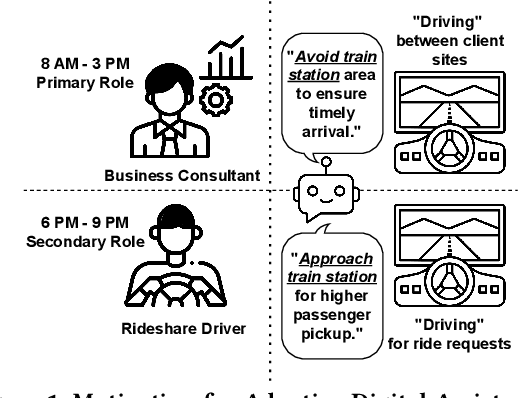

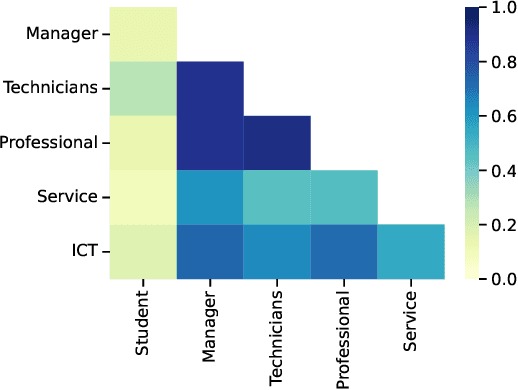

Abstract:Occupation information can be utilized by digital assistants to provide occupation-specific personalized task support, including interruption management, task planning, and recommendations. Prior research in the digital workplace assistant domain requires users to input their occupation information for effective support. However, as many individuals switch between multiple occupations daily, current solutions falter without continuous user input. To address this, this study introduces WorkR, a framework that leverages passive sensing to capture pervasive signals from various task activities, addressing three challenges: the lack of a passive sensing architecture, personalization of occupation characteristics, and discovering latent relationships among occupation variables. We argue that signals from application usage, movements, social interactions, and the environment can inform a user's occupation. WorkR uses a Variational Autoencoder (VAE) to derive latent features for training models to infer occupations. Our experiments with an anonymized, context-rich activity and task log dataset demonstrate that our models can accurately infer occupations with more than 91% accuracy across six ISO occupation categories.
Solar Power Time Series Forecasting Utilising Wavelet Coefficients
Oct 01, 2022



Abstract:Accurate and reliable prediction of Photovoltaic (PV) power output is critical to electricity grid stability and power dispatching capabilities. However, Photovoltaic (PV) power generation is highly volatile and unstable due to different reasons. The Wavelet Transform (WT) has been utilised in time series applications, such as Photovoltaic (PV) power prediction, to model the stochastic volatility and reduce prediction errors. Yet the existing Wavelet Transform (WT) approach has a limitation in terms of time complexity. It requires reconstructing the decomposed components and modelling them separately and thus needs more time for reconstruction, model configuration and training. The aim of this study is to improve the efficiency of applying Wavelet Transform (WT) by proposing a new method that uses a single simplified model. Given a time series and its Wavelet Transform (WT) coefficients, it trains one model with the coefficients as features and the original time series as labels. This eliminates the need for component reconstruction and training numerous models. This work contributes to the day-ahead aggregated solar Photovoltaic (PV) power time series prediction problem by proposing and comprehensively evaluating a new approach of employing WT. The proposed approach is evaluated using 17 months of aggregated solar Photovoltaic (PV) power data from two real-world datasets. The evaluation includes the use of a variety of prediction models, including Linear Regression, Random Forest, Support Vector Regression, and Convolutional Neural Networks. The results indicate that using a coefficients-based strategy can give predictions that are comparable to those obtained using the components-based approach while requiring fewer models and less computational time.
CoSEM: Contextual and Semantic Embedding for App Usage Prediction
Aug 26, 2021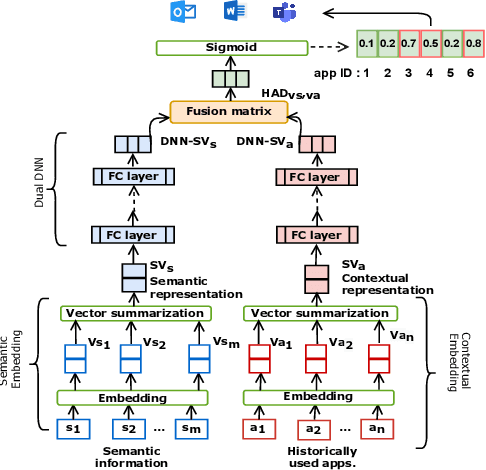
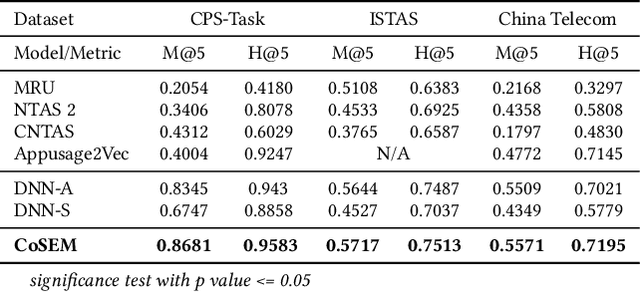
Abstract:App usage prediction is important for smartphone system optimization to enhance user experience. Existing modeling approaches utilize historical app usage logs along with a wide range of semantic information to predict the app usage; however, they are only effective in certain scenarios and cannot be generalized across different situations. This paper address this problem by developing a model called Contextual and Semantic Embedding model for App Usage Prediction (CoSEM) for app usage prediction that leverages integration of 1) semantic information embedding and 2) contextual information embedding based on historical app usage of individuals. Extensive experiments show that the combination of semantic information and history app usage information enables our model to outperform the baselines on three real-world datasets, achieving an MRR score over 0.55,0.57,0.86 and Hit rate scores of more than 0.71, 0.75, and 0.95, respectively.
MoParkeR : Multi-objective Parking Recommendation
Jun 10, 2021



Abstract:Existing parking recommendation solutions mainly focus on finding and suggesting parking spaces based on the unoccupied options only. However, there are other factors associated with parking spaces that can influence someone's choice of parking such as fare, parking rule, walking distance to destination, travel time, likelihood to be unoccupied at a given time. More importantly, these factors may change over time and conflict with each other which makes the recommendations produced by current parking recommender systems ineffective. In this paper, we propose a novel problem called multi-objective parking recommendation. We present a solution by designing a multi-objective parking recommendation engine called MoParkeR that considers various conflicting factors together. Specifically, we utilise a non-dominated sorting technique to calculate a set of Pareto-optimal solutions, consisting of recommended trade-off parking spots. We conduct extensive experiments using two real-world datasets to show the applicability of our multi-objective recommendation methodology.
Generative Adversarial Networks for Spatio-temporal Data: A Survey
Aug 18, 2020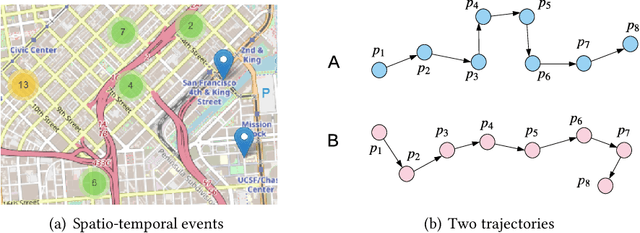

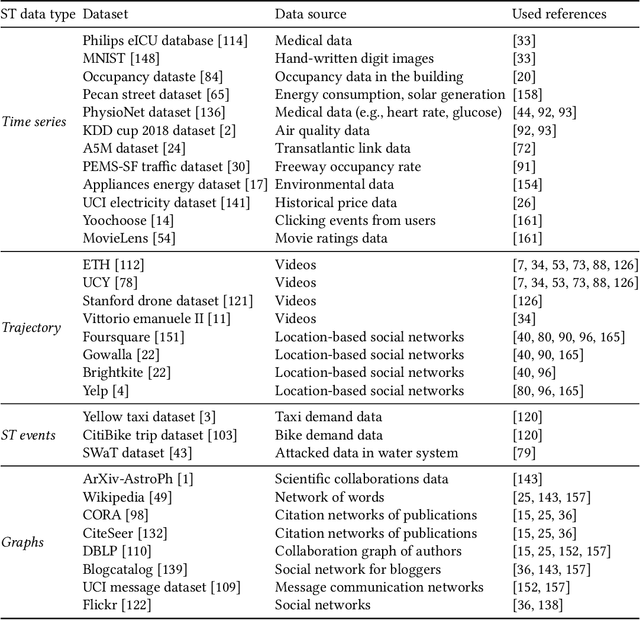

Abstract:Generative Adversarial Networks (GANs) have shown remarkable success in the computer vision area for producing realistic-looking images. Recently, GAN-based techniques are shown to be promising for spatiotemporal-based applications such as trajectory prediction, events generation and time-series data imputation. While several reviews for GANs in computer vision been presented, nobody has considered addressing the practical applications and challenges relevant to spatio-temporal data. In this paper, we conduct a comprehensive review of the recent developments of GANs in spatio-temporal data. we summarise the popular GAN architectures in spatio-temporal data and common practices for evaluating the performance of spatio-temporal applications with GANs. In the end, we point out the future directions with the hope of benefiting researchers interested in this area.
FADACS: A Few-shot Adversarial Domain Adaptation Architecture for Context-Aware Parking Availability Sensing
Jul 13, 2020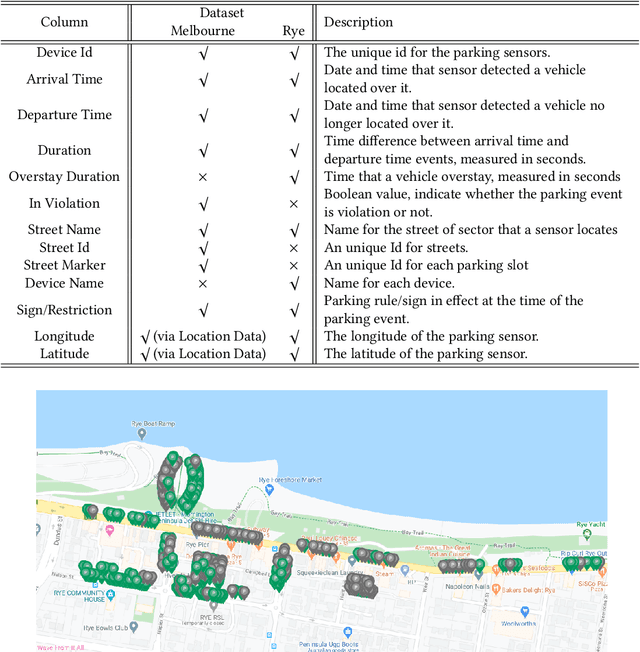
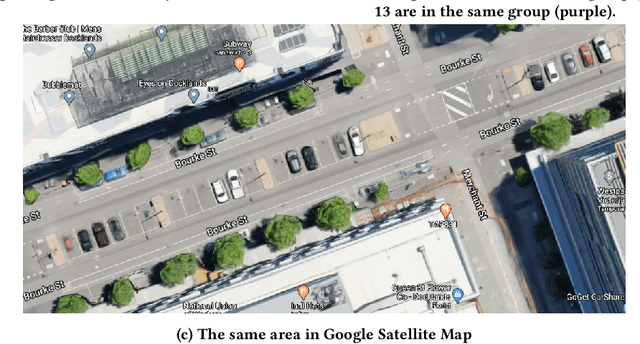
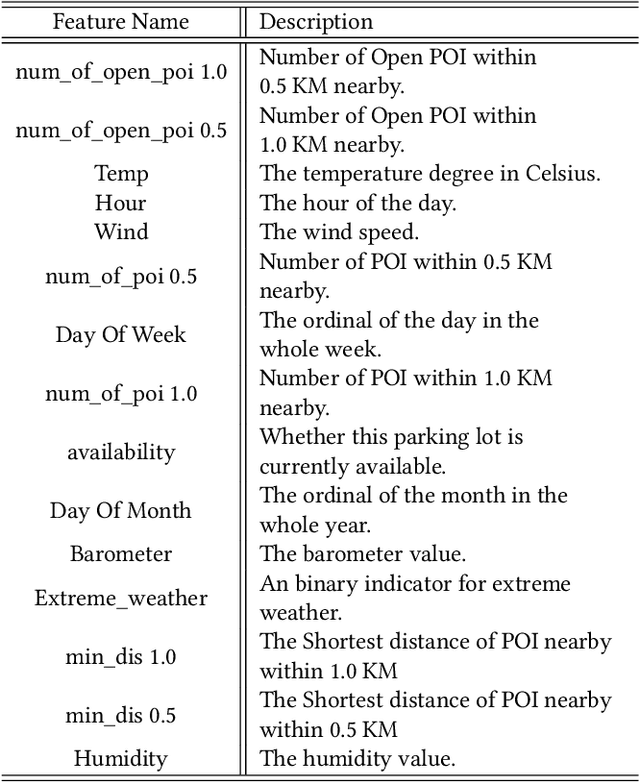

Abstract:The existing research on parking availability sensing mainly relies on extensive contextual and historical information. In practice, it is challenging to have such information available as it requires continuous collection of sensory signals. In this paper, we design an end-to-end transfer learning framework for parking availability sensing to predict the parking occupancy in areas where the parking data is insufficient to feed into data-hungry models. This framework overcomes two main challenges: 1) many real-world cases cannot provide enough data for most existing data-driven models. 2) it is difficult to merge sensor data and heterogeneous contextual information due to the differing urban fabric and spatial characteristics. Our work adopts a widely-used concept called adversarial domain adaptation to predict the parking occupancy in an area without abundant sensor data by leveraging data from other areas with similar features. In this paper, we utilise more than 35 million parking data records from sensors placed in two different cities, one is a city centre, and another one is a coastal tourist town. We also utilise heterogeneous spatio-temporal contextual information from external resources including weather and point of interests. We quantify the strength of our proposed framework in different cases and compare it to the existing data-driven approaches. The results show that the proposed framework outperforms existing methods and also provide a few valuable insights for parking availability prediction.
Mining Student Responses to Infer Student Satisfaction Predictors
Jun 14, 2020

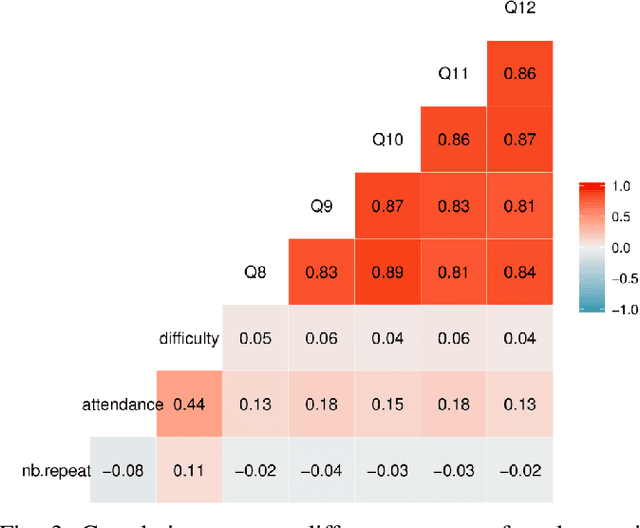

Abstract:The identification and analysis of student satisfaction is a challenging issue. This is becoming increasingly important since a measure of student satisfaction is taken as an indication of how well a course has been taught. However, it remains a challenging problem as student satisfaction has various aspects. In this paper, we formulate the student satisfaction estimation as a prediction problem where we predict different levels of student satisfaction and infer the influential predictors related to course and instructor. We present five different aspects of student satisfaction in terms of 1) course content, 2) class participation, 3) achievement of initial expectations about the course, 4) relevancy towards professional development, and 5) if the course connects them and helps to explore the real-world situations. We employ state-of-the-art machine learning techniques to predict each of these aspects of student satisfaction levels. For our experiment, we utilize a large student evaluation dataset which includes student perception using different attributes related to courses and the instructors. Our experimental results and comprehensive analysis reveal that student satisfaction is more influenced by course attributes in comparison to instructor related attributes.
An Ambient-Physical System to Infer Concentration in Open-plan Workplace
May 27, 2020



Abstract:One of the core challenges in open-plan workspaces is to ensure a good level of concentration for the workers while performing their tasks. Hence, being able to infer concentration levels of workers will allow building designers, managers, and workers to estimate what effect different open-plan layouts will have and to find an optimal one. In this research, we present an ambient-physical system to investigate the concentration inference problem. Specifically, we deploy a series of pervasive sensors to capture various ambient and physical signals related to perceived concentration at work. The practicality of our system has been tested on two large open-plan workplaces with different designs and layouts. The empirical results highlight promising applications of pervasive sensing in occupational concentration inference, which can be adopted to enhance the capabilities of modern workplaces.
Transfer Learning for Thermal Comfort Prediction in Multiple Cities
Apr 29, 2020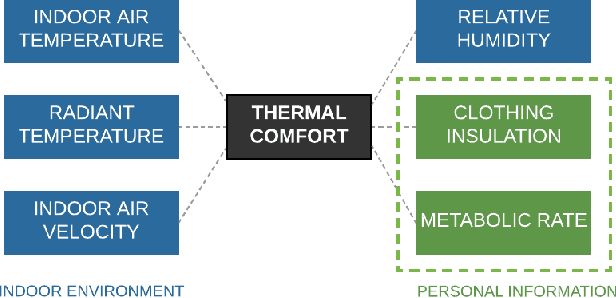

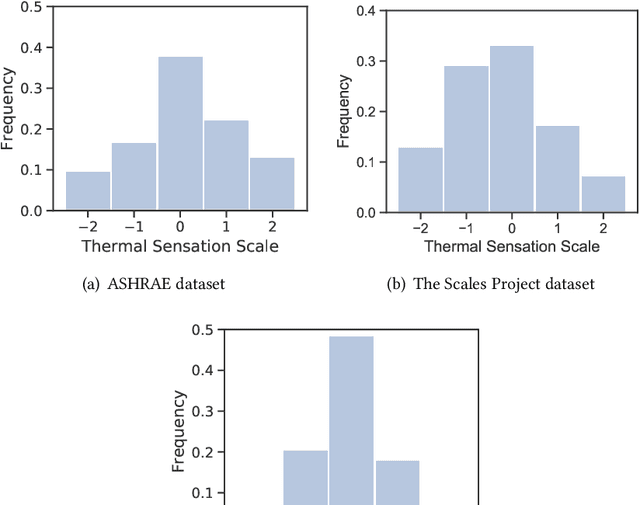
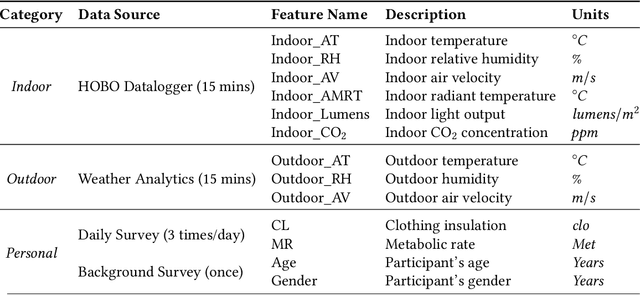
Abstract:HVAC (Heating, Ventilation and Air Conditioning) system is an important part of a building, which constitutes up to 40% of building energy usage. The main purpose of HVAC, maintaining appropriate thermal comfort, is crucial for the best utilisation of energy usage. Besides, thermal comfort is also crucial for well-being, health, and work productivity. Recently, data-driven thermal comfort models have got better performance than traditional knowledge-based methods (e.g. Predicted Mean Vote Model). An accurate thermal comfort model requires a large amount of self-reported thermal comfort data from indoor occupants which undoubtedly remains a challenge for researchers. In this research, we aim to tackle this data-shortage problem and boost the performance of thermal comfort prediction. We utilise sensor data from multiple cities in the same climate zone to learn thermal comfort patterns. We present a transfer learning based multilayer perceptron model from the same climate zone (TL-MLP-C*) for accurate thermal comfort prediction. Extensive experimental results on ASHRAE RP-884, the Scales Project and Medium US Office datasets show that the performance of the proposed TL-MLP-C* exceeds the state-of-the-art methods in accuracy, precision and F1-score.
 Add to Chrome
Add to Chrome Add to Firefox
Add to Firefox Add to Edge
Add to Edge